A Brief Recap on Winter 2023
This winter is feeling long. It’s been unusual in that frigid temperatures began in November, bringing consecutive days where the thermometer repeatedly dipped like a potato chip into a tasty spread. Only not quite as fun or delicious. Especially with wind chill.
December continued in this way until we were gifted a brief warm up just after Christmas that lasted into January. During this traditionally frosty month, we experienced a copious amount of rain in the valley instead of the usual snow. It seems November and January did a do si do on us. Switching places for fun and japes.
But not so fast!
By the end of January the icy cold returned and continues to linger deep into February.

Utah Lake, which in the recent past has had only has one good freeze, if that, had several this past year. In fact, it was so solid that on the day before Christmas eve, Christine, my fellow wanderer and podcast partner in crime, and I were able to venture a mile out onto its solid surface. You can see Christine there in the Panorama above looking back towards the distant shoreline.
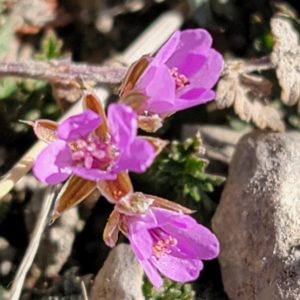
Usually, by late February, we see a substantial if gradual warm up, with days climbing into the 40s on a more regular basis. Often, purple Storksbill and tiny four petaled Monkeyflower will be making a happy appearance as spring equinox grows ever near. Not so this year. Just this week, we got another 6 inches of snow in the valley. When wandering, any exposed skin is subject to being slapped scarlet by the extra long whip of this winter’s coat tails this year.

Every time the sun comes out, however, I keep hope that it will stay and prove to me that winter hasn’t planned to take up permanent residence just to spite my desire to dis-bundle more permanently from my winter wardrobe. This is that ever so posh way of dressing that I refer to as “the onioning” with its many, many layers of defense against the bitter weather.
Charming, no?
Messy for certain, as I peel of each snow soaked outer layer and sweat soaked inner layer. Oh how I long for the days of tank tops and sunshine on my shoulders.
And Now For the Good Part
I have been thinking on this blog for a while. And like the feature of this title, my brain has flitted and danced around it never quite lighting long enough to write it. But at last I have made myself sit and actually put these words to ground.
During the ubiquitous monochrome of winter gray, I miss the beauty of the butterfly; their lovely ephemeral existence in a variety of palates; their crack head flights that never seem to take a direction for more than few seconds; these wind-borne blooms mirroring their earth anchored hosts. Especially, in the midst of this long winter, I take a little comfort in reminding myself of something that I just learned this past year; that just over there, in that quilt patch of oaks, or in that cozy pile of leaves protected by a rocky overhang, one of these fully winged creatures might be tucked into a cozy crevice dreaming, along with me, of spring.
A full grown butterfly, you might be asking?
Yes, a fully grown, winged out butterfly.

Of course, many butterfly species winter over as pupa with a nice sturdy chrysalis to protect them from winter’s brutal hand, or as larvae buried into a warm cradle of soil. These await the song of the sun to dance them into and or through metamorphosis. Other species take wing in late summer, such as Monarchs, Admirals and Painted Ladies, migrating smartly to warmer places. (How I would like to follow them one year)!

But a few, including one of my very favorite species, Nymphalis Antiopa, or the Mourning Cloak, winter over as adults, tucked into tree bark, or nestled in old logs, or under a comforter of leaf debris. Here they will hibernate until the temperatures climb to an appropriate degree. For the Mourning Cloak, earliest of the butterflies to awaken from a winter’s slumber, this can be as low as 50 degrees.
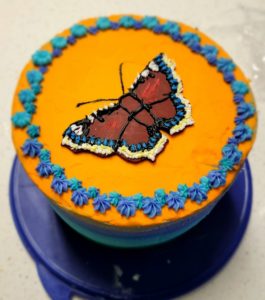
These ingenious creatures have developed a clever adaptation. At the end of summer, they will go into a brief state of estivation. During this period the butterfly will lower it’s body temperature and metabolism, after procuring itself in a protected area, for a short period of time – about a month or so. Afterwards, the Mourning Cloak will re-emerge to make a surprise appearance in late fall, (ta da)! It’s mission is now to eat and eat and eat in preparation for the second, longer dormancy of overwintering. Kind of like what we do in late fall with all of the holidays and festivals. Only we don’t get to sleep it off over the dark and cold months, no fair!
When the temperature begins to drop into and below 40 degrees, the Mourning Cloak will go into a true state of hibernation. Unlike mammals who enter this state, however, they are not awakened by an increase in the hours of daylight, but rather by an increase in temperature. This is why you might occasionally see one in late February or Early March here in Northern Utah. (Yes, please).

When freezing temperatures arrive, these butterfly folk essentially become tiny little insect popsicles with a secret, magic ingredient. Morning cloaks are able to reduce the amount of water in their blood and thicken it with glycerol, sorbitol, and other agents. Together, these act as a form of organic antifreeze which is similar to the antifreeze we pour into car radiators. This lifesaving trick keeps their tissues from forming damaging ice crystals. In this way, Mourning Cloaks can withstand temperatures down to minus eighty degrees.
These winged miracles are a demonstration in resilience. Furthermore, they live relatively long lives for their kind. Along with their fellow overwintering nyphalis kin, the Angel Wing and the Comma butterfly, these insects can reach up to a ripe old age of 10-11 months. Which in human years is a cagillion years old…probably.
It may have have seemed incongruent, when first reading the title of this blog: A Butterfly in Winter; but now you know this is no myth. Butterflies remain with us even in the heart of this sometimes brutal season.
A Butterfly by Any Other Name…
For me this winter started out in a very strange place. I’ve participated in in two protests, due to an indirect involvement I had in a family court trial that revolves around a broken and corrupt system. You can read about it on international blogger and advocate, Tina Swithen’s blog Onemomsbattle. You can also read about it here in this article from ProPublica.
I personally witnessed, what seemed to me, abusive and manipulative behavior from the G.A.L. involved in this case; watched in shock and frustration as an affidavit I wrote in defense of a contempt charge that had been filed against the mother was deliberately misconstrued and out and out lied about in court by the abusive(several substantiated claims by DCFS) father’s lawyer. I further observed the strange behavior and suggestions of the presiding judge at this same trial. This included a recommendation for starving children out of their rooms! I kid you not. I hope you will take time to read through the blog and article highlighted above in which you find more details about this story.
All of this made me feel like we must have entered another dimension because it seemed so outlandish and obviously wrong. But sadly, these same type of things have happened before in this court; Utah’s 4th district, Provo, not to mention in courts all over the country who haven’t yet adopted Kayden’s Law . I am hopeful that through this protest, our legislature may take a serious look at this issue and adopt this protection for the sake of this family and many others here in Utah.
This winter I have written several government officials in regards to these injustices as well as to express my dismay at the mal-advised bills that are passing into legislation, namely Senate Bill 16 in Utah which bans gender affirming care for transgender youth. I encourage all to read this article released in Scientific American magazine in May of 2022 explaining how trans affirming care has shown across the board to lead to happier, healthier lives for this population.

This is very personal to me as I am a mom of a trans daughter and I deeply am affected by these bills which seem based on, at best, a misplaced concern and at worst fear and hate, and not at all upon actual peer reviewed science, or what is wanted or needed by this population. The world seems much darker to me since I have become aware of these terrible situations, neither of which is limited to the state of Utah. I admit I have felt disheartened often throughout this correspondingly long winter.
Nature has always been my place of solace, my place of stillness and my place of deep instruction. To me the butterfly represents many significant concepts and archetypes as it has to peoples across time place.
To see a butterfly is to see a creature of incredible beauty and imagination, a creature that defies form and label in its miraculous metamorphosis, a creature who is fragile but holds a surprising resilience; like the children who are caught in and survive the web of evil and abuse known as “reunification therapy” and the “alienation” industry; Like the transgender population who personify transformation and who show us how life takes form in so many varieties all equal in validity and beauty.
To think of a Butterfly in Winter is to think of these things. It is to remember that the creative power to chose a better way remains with us. It is that unlikely loveliness, that delicate promise of hope sheltering in the human heart – enduring.
Read more about and or to show support for the kids and family who I protested in support of below:
 https://www.tyandbrynsarmy.com/
https://www.tyandbrynsarmy.com/
https://www.tiktok.com/tag/tyandbrynsarmy
#justicefortyandbryn
#Onemomsbattle
#mendingmindsvilliage
Twitch: @stupid_flipper
Happy end of winter wandering,
Juni-Jen










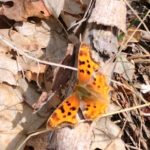
















 In the backyard of my brother’s new home, I fell into a wonderment of crimson – a curious cardinal, and became utterly enchanted by the ethereal flight of the lightening bug. I have been told there are such insects in Utah at certain times of the year. I might have to make this a quest for the future.
In the backyard of my brother’s new home, I fell into a wonderment of crimson – a curious cardinal, and became utterly enchanted by the ethereal flight of the lightening bug. I have been told there are such insects in Utah at certain times of the year. I might have to make this a quest for the future. My daily walks around the country roads of Northern Alabama, were orchestrated by an ever present cacophony of cicada serenading from patches of wooded acreage. This is such a singular music, falling somewhere between buzzing of electrical wires and high tenor lawn mower. The cicada population of this year is an annual species and not the anticipated 13 (
My daily walks around the country roads of Northern Alabama, were orchestrated by an ever present cacophony of cicada serenading from patches of wooded acreage. This is such a singular music, falling somewhere between buzzing of electrical wires and high tenor lawn mower. The cicada population of this year is an annual species and not the anticipated 13 (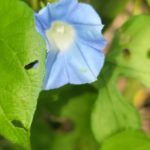

 I, also, very much wanted to visit the
I, also, very much wanted to visit the 





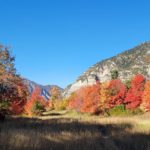


 Along the expansive shoreline at Utah Lake this morning, storm clouds mist the wind swept water, as well as myself as I meander through the shallows. Suddenly I catch sight of a large dark shape skimming and then rising above the water line…to big for hawk or gull, it’s shape distinct even from the osprey I see in summer. This is a singular silhouette, formidable, with expansive wings tipped with fierce feathers splayed defiantly against a tempest shrouded sun.
Along the expansive shoreline at Utah Lake this morning, storm clouds mist the wind swept water, as well as myself as I meander through the shallows. Suddenly I catch sight of a large dark shape skimming and then rising above the water line…to big for hawk or gull, it’s shape distinct even from the osprey I see in summer. This is a singular silhouette, formidable, with expansive wings tipped with fierce feathers splayed defiantly against a tempest shrouded sun.



 Yes, if you do wish to physically accost an actual hornet’s nest, winter is best. This is because winter is when these structures are most likely to be emptied of their prickly inhabitants.
Yes, if you do wish to physically accost an actual hornet’s nest, winter is best. This is because winter is when these structures are most likely to be emptied of their prickly inhabitants.
 So why write about wasps? The fact is that they really don’t deserve the bad rap they are given. Wasps play an important role in a healthy ecological system. You can check out their many benefits
So why write about wasps? The fact is that they really don’t deserve the bad rap they are given. Wasps play an important role in a healthy ecological system. You can check out their many benefits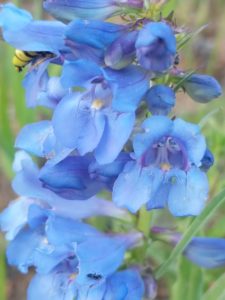













 You think, at first, it is strange and wonder what notes are missing from the chorus. And then it dawns. Gone is the drone of insect wings, the high incessant soprano whine of the tiny Nosferatu.
You think, at first, it is strange and wonder what notes are missing from the chorus. And then it dawns. Gone is the drone of insect wings, the high incessant soprano whine of the tiny Nosferatu.



 Mitigation…that’s what they call it when they spray insecticide.
Mitigation…that’s what they call it when they spray insecticide.




 Or, If you don’t speak the language of the wilderness – maybe ask the beautiful bronzed skinned human beings that have lived, and thrived in this place since a time before time.
Or, If you don’t speak the language of the wilderness – maybe ask the beautiful bronzed skinned human beings that have lived, and thrived in this place since a time before time. Every once and a while the cloud beings band together in force and let loose their long liquid skirts upon this high desert country in torrential rains. And though, we need it this year, and I do feel grateful for it, it’s been one of those days when the heavy, bruised dome above, matches my inner climate.
Every once and a while the cloud beings band together in force and let loose their long liquid skirts upon this high desert country in torrential rains. And though, we need it this year, and I do feel grateful for it, it’s been one of those days when the heavy, bruised dome above, matches my inner climate. virus, and yet, I still have managed to harbor and replicate and become ill with the mechanisms of mysterious organism. It has been a month and a half now. And after yet another visit to my doctor, I am officially falling into the long term category, with symptoms that are often debilitating, or at the very least, creating road blocks in my work and daily living. Though I am hoping not to be there for long! At least that is my constant silent mantra.
virus, and yet, I still have managed to harbor and replicate and become ill with the mechanisms of mysterious organism. It has been a month and a half now. And after yet another visit to my doctor, I am officially falling into the long term category, with symptoms that are often debilitating, or at the very least, creating road blocks in my work and daily living. Though I am hoping not to be there for long! At least that is my constant silent mantra. Purple haze: I can hear the late genius Jimmy Hendrix soulfully wailing, “’Scuse me while I kiss the sky”! I’d much rather kiss the sky than “kiss this guy”. He probably is spreading covid, I think sarcastically recalling this popular mondegreen. Sky wins over guy any day nowadays, in my book. This is my angry mind speaking, dear reader, so please forgive.
Purple haze: I can hear the late genius Jimmy Hendrix soulfully wailing, “’Scuse me while I kiss the sky”! I’d much rather kiss the sky than “kiss this guy”. He probably is spreading covid, I think sarcastically recalling this popular mondegreen. Sky wins over guy any day nowadays, in my book. This is my angry mind speaking, dear reader, so please forgive.



 I stop to examine a little gray rock, where several little lady bugs have oddly congregated. As I walk further down the shore, I notice other such gatherings on concrete, or old logs, and some laying still and silent piled up into frowning rows just above the water line.
I stop to examine a little gray rock, where several little lady bugs have oddly congregated. As I walk further down the shore, I notice other such gatherings on concrete, or old logs, and some laying still and silent piled up into frowning rows just above the water line. Yep, Lady Bug Wash Up is a thing! Sadly, this is not some sort of happy bath house where six legged spotted red coats gather to casually gossip and bath in tiny little pools of water while sipping aphid-tinis.
Yep, Lady Bug Wash Up is a thing! Sadly, this is not some sort of happy bath house where six legged spotted red coats gather to casually gossip and bath in tiny little pools of water while sipping aphid-tinis. But let’s get back to the topic at hand. A Lady Bug Wash Up is an occurrence where several lady bugs, hundreds, thousands even into the millions, as once occurred on the Libyan Desert coast of Egypt in April 1939, end up floating in sea or lake water and washing up in clumps, both dead and alive along the shorelines of large and small bodies of water.
But let’s get back to the topic at hand. A Lady Bug Wash Up is an occurrence where several lady bugs, hundreds, thousands even into the millions, as once occurred on the Libyan Desert coast of Egypt in April 1939, end up floating in sea or lake water and washing up in clumps, both dead and alive along the shorelines of large and small bodies of water.
 I guess, that means, I might have to wade through the purple haze of this covid experience for at least as long in human terms. Which I do not know how I would calculate. But the message is clear. If in the haze, just keep swimming…the shore is out there, and it even may be expanding towards you and you might get there sooner than later, or later than sooner, but you will get there, and that is the point. Or as a lady bug might say, the spot. Unless it’s a pink one with no spots….
I guess, that means, I might have to wade through the purple haze of this covid experience for at least as long in human terms. Which I do not know how I would calculate. But the message is clear. If in the haze, just keep swimming…the shore is out there, and it even may be expanding towards you and you might get there sooner than later, or later than sooner, but you will get there, and that is the point. Or as a lady bug might say, the spot. Unless it’s a pink one with no spots….